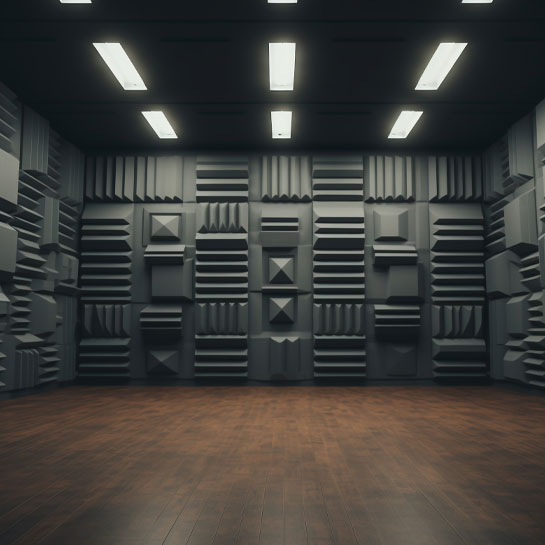When you soundproof a wall, you must use the right materials. Thanks to them, you keep noise away and gain peace of mind. But before using them, you should know the steps to follow in their installation or which are the most outstanding options. Do not stop reading!
Why is soundproofing important?
Enjoying a quiet home is not only a matter of comfort, it is also a matter of health. If the noise is constant and too loud, you will end up suffering from discomfort. You would find it hard to concentrate, have difficulty sleeping and feel increasingly stressed. In the end, you would be so irritated that it would show in your character and in your interactions with other people.
On the other hand, noise can come from many sources, from those outside the building to those inside. Poorly soundproofed walls let in the sounds of tools, music or conversation. But not only you hear your neighbors or what they do, they are also in the same situation as you. Therefore, you remain exposed to constant disturbances and lose an important part of your privacy.

Steps to follow
After seeing the effects of poor soundproofing, you should know the steps you can take to solve the problem. Consider the following:
Evaluate the noise level. Determine what kind of sounds you want to block and how much insulation you need. This will help you select the right materials for the situation you are in.
Identify the sources of noise. Locate the source of the sound on the wall you want to soundproof. It may be coming from the outside, such as traffic, or from inside the building, especially from the activity of your neighbors.
Choose the right soundproofing materials. There are a variety of options, such as soundproofing panels, acoustic mastic, sheet vinyl or foam. Research their properties and choose the one that best meets your needs.
Prepare the wall. Clean and remove any dirt, dust or debris. If there are cracks or holes, fill them with caulk to ensure a smooth, even surface.
Install the soundproofing materials. Follow the manufacturer’s instructions to avoid making mistakes and to achieve the desired effects.
Seal joints and cracks. Use acoustical caulk or tape to seal all holes around the wall to prevent leaks.
Perform sound tests. After soundproofing the wall, check if the noise has stopped being so loud or if it has been completely mitigated.
Materials for soundproofing walls
As you have seen, you can use different materials to soundproof a room. Each one has certain characteristics that you need to know. Thus, you will find the one that best suits your needs and the budget you are managing.
Polyurethane. It is a simple solution for soundproofing a room. In addition, its cost is lower than that of other materials and it is usually marketed in sheets.
Acoustical caulk. It is used to seal cracks, joints and gaps in the wall, which helps to reduce sound transmission.
Gypsum plasterboard panels PPH. They have an additional layer of insulation material integrated into their design. This leads to an increase in weight, but also greater ability to block sound.
Vinyl. You’ll find it in sheet form that you can place between the existing wall and a new layer of siding. In this way, you add an additional barrier to curb noise.
Rock wool. It provides good acoustic and thermal insulation, while resisting fire and high temperatures. As it has a porous and dense structure, it prevents sound propagation. In addition, the material is marketed in different formats, such as rigid panels or flexible blankets.
Glass wool. Its structure is similar to that of rock wool, since it is porous. When sound waves reach the material, its fibers trap them and convert them into thermal energy. Thus, the sound that ends up passing through is minimal.
Cork. If you are looking for a sustainable option, this is the best. Its capacity to absorb noise is high and the weight of the material is low, which facilitates its installation in walls, walls or floors. It can also be combined with other materials to achieve maximum soundproofing.
Soundproofing tips and ideas
Soundproofing the house where you live will greatly improve your quality of life. You will not have to put up with external noises that, in the end, will affect your health and that of your family members. To stop annoying sounds from being a problem, you can place different materials on the walls. Both inside the walls and on the surface, you create a series of layers for perfect soundproofing.
Along with the above, ceilings and floors also deserve attention, especially if you live in an apartment. You have multiple solutions, among which the placement of suspended panels stands out. Their purpose is to absorb sound waves coming from the upper floor and they are easy to install. A more expensive alternative is to install a false ceiling to put insulating materials inside.
As for the floor, carpets reduce sound transmission from the floor below. They are an effective solution and improve the aesthetics of a room. Of course, the materials you already know are still a valid option.
Likewise, the furniture in a room can help with soundproofing. Furniture with padding or upholstery absorbs noise instead of reflecting it, which is very useful. Even a bookshelf full of books can be an appropriate solution if you place it in the right place. After all, it becomes just another obstacle and, in fact, contributes to reducing the echo in the room itself.
If you soundproof a wall, take into account everything you have read. There are materials that you can use, both to place on the surface and inside the wall. And they are not the only solution, because the furniture and decorative elements of a room are of great help.


